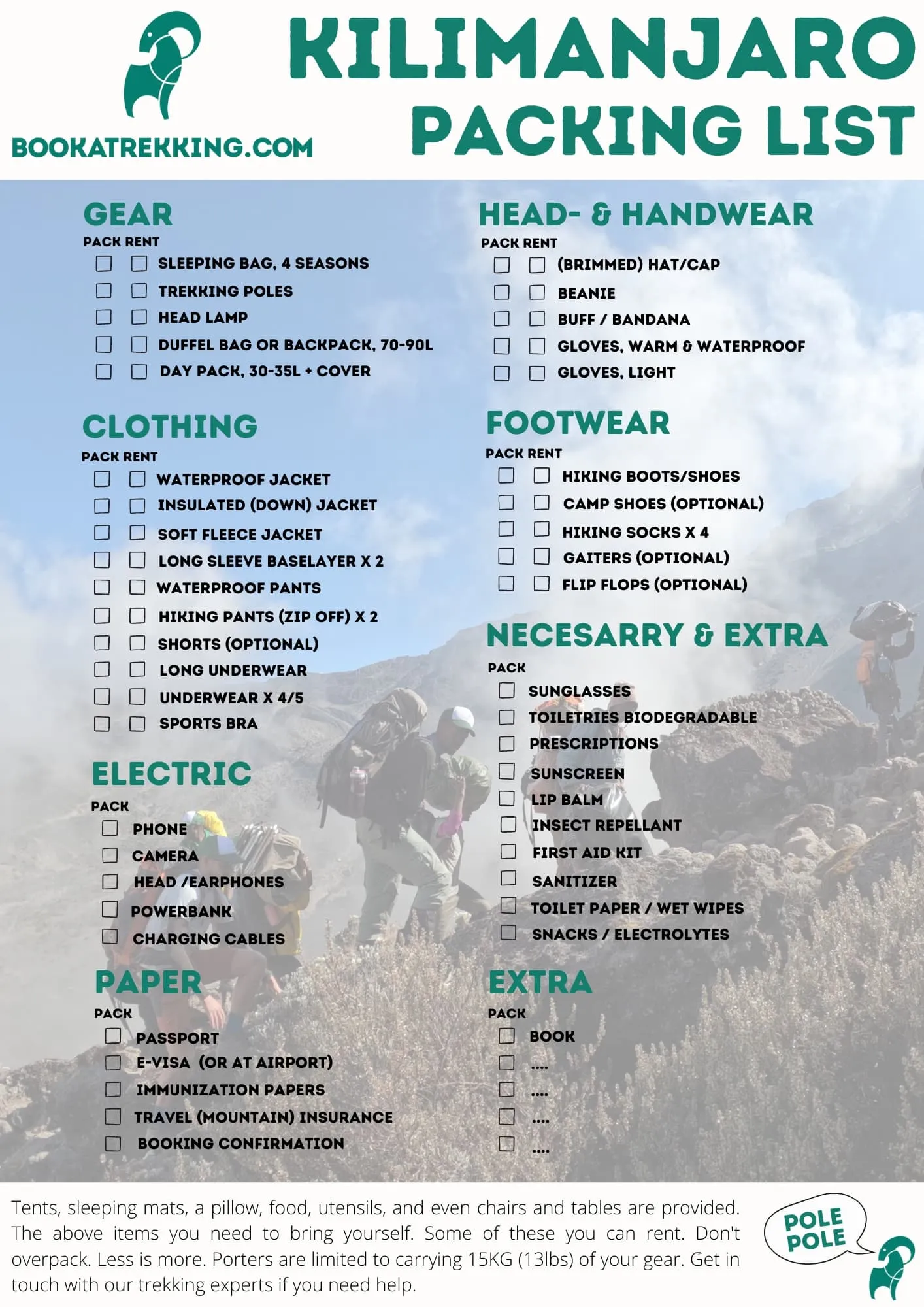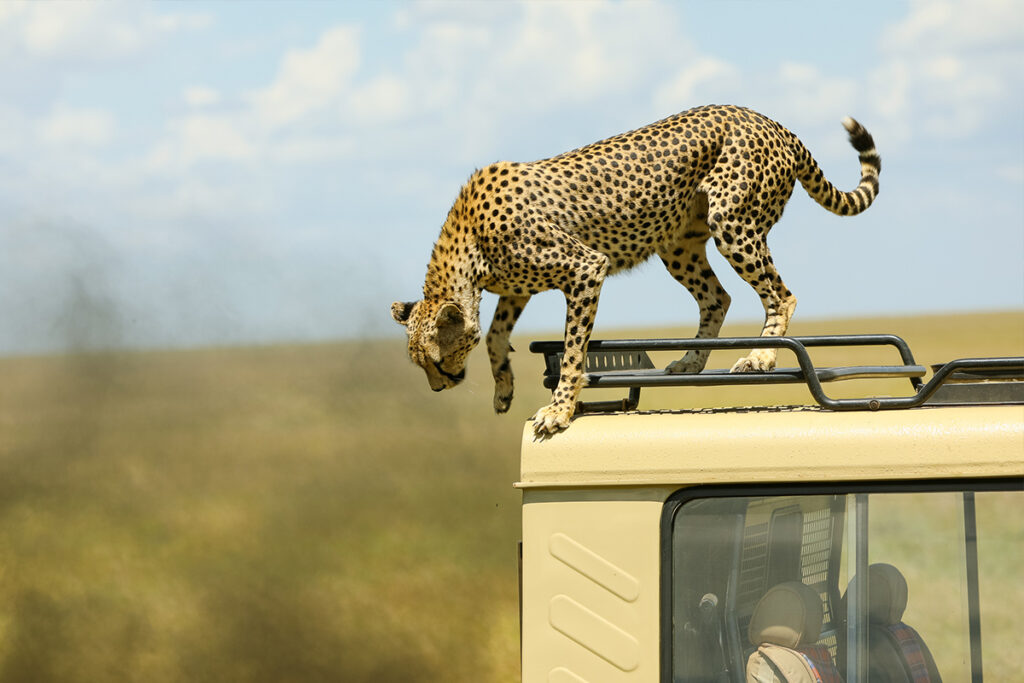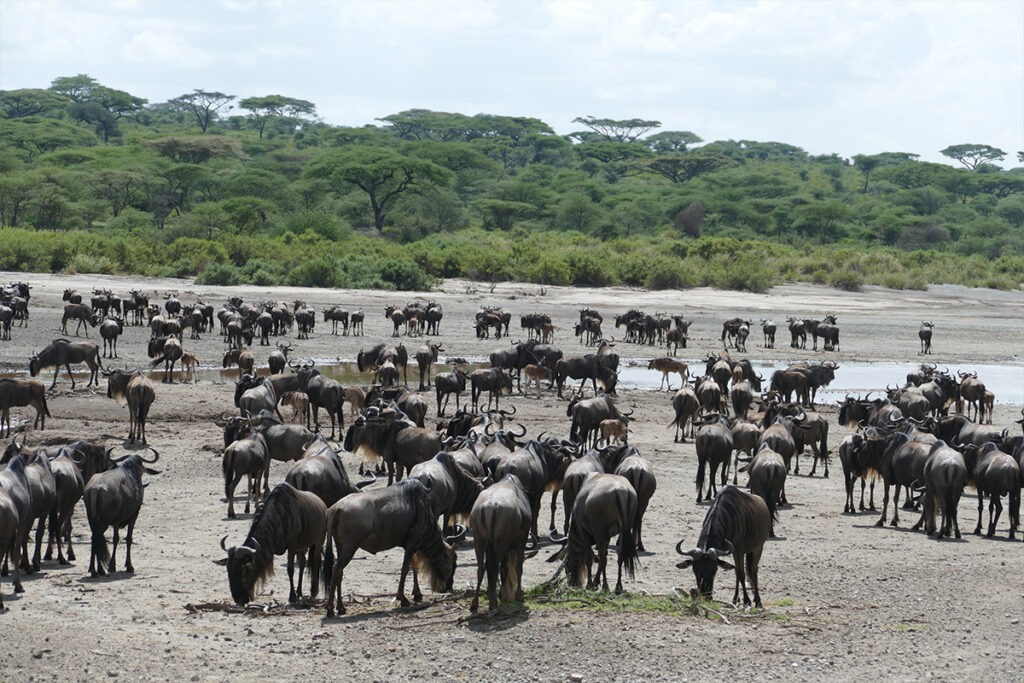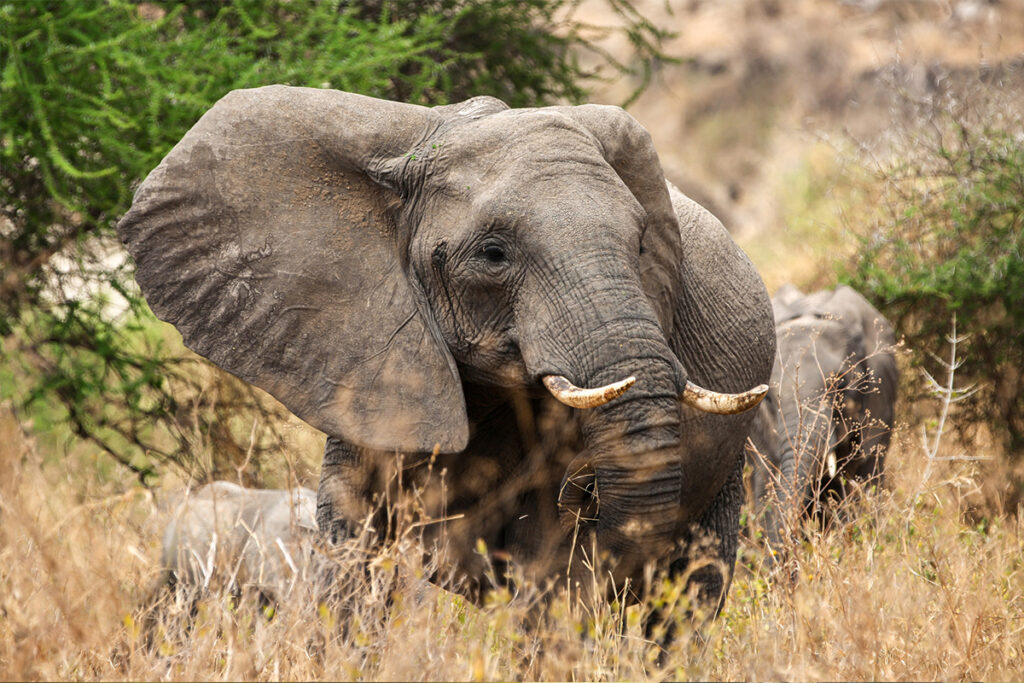Climbing Mount Kilimanjaro is not just an adventure; it’s a carefully choreographed feat of endurance and preparation. Interestingly, only about 65% of climbers make it to the summit, often hindered by inadequate packing. The right gear can make the exquisite beauty of Africa’s highest peak more accessible and safer for those who attempt it.
Since the early days of climbing, a robust packing list has been crucial for success. Essential items such as layered clothing, insulated jackets, and climbing boots are non-negotiable in combating the mountain’s unpredictable climate. A staggering 90% of successful climbers attribute their triumph to tirelessly planned gear, aligning perfectly with the adage that preparation is half the battle won.

Kilimanjaro Packing List: What to Bring
Embarking on a journey to climb Mount Kilimanjaro requires careful preparation. Layered clothing is key because the temperature changes as you ascend. You might start in warm weather, but the top can be freezing. A good packing list ensures you’re ready for any weather condition. Remember, being prepared can make the difference between comfort and hardship.
Footwear is another critical aspect when packing for this adventure. Durable, waterproof hiking boots are essential to protect your feet. Sore or blistered feet can ruin an expedition, so pay attention to quality and fit. Always bring extra socks to keep your feet dry and warm. Packing comfortable camp shoes gives them a break in the evenings.
Many climbers also stress the importance of having the right gear. Essentials include a reliable backpack, water bottles, and trekking poles. Don’t forget sun protection gear like a hat and sunscreen. Plus, pack a headlamp for navigating in the dark. These items ensure a safer, more enjoyable climb.
It’s equally important to think about personal items like medications and toiletries. Bring any personal prescriptions as healthcare facilities are scarce on the trek. Also, maintain hygiene with biodegradable soap and sanitizers. A small first-aid kit with bandages and antiseptic wipes can be a lifesaver. With these essentials, you’ll be well-equipped for your Kilimanjaro adventure.
Kilimanjaro Packing List | A – Z | Follow Alice
Clothing Essential for the Kilimanjaro Climb
Appropriate clothing is vital for climbing Kilimanjaro due to the mountain’s varied climate. At the base, temperatures are warm, requiring light clothing like shorts and t-shirts. However, as you climb higher, layers become crucial. A layering system helps adjust to temperature changes. A typical layering system includes a base layer, mid-layer, and an outer shell for protection against rain and wind.
The base layer, worn directly on the skin, wicks away moisture to keep you dry. Common materials for this layer include merino wool and synthetic fabrics. These fabrics maintain insulation even when wet, unlike cotton which can become cold and heavy. Having multiple base layers allows you to switch out and stay fresh. This prevents chill and discomfort during the trek.
Mid-layers, like fleece jackets or down sweaters, provide warmth. They trap heat close to your body and can be easily added or removed. A versatile mid-layer is key as the temperature drops. A fleece jacket paired with a lightweight down sweater works well. This combination retains warmth without adding too much bulk.
The outer shell protects against rain and wind, two common factors on Kilimanjaro. Look for jackets that are waterproof and breathable. GORE-TEX is a popular choice for its reliable water resistance. A sturdy outer layer helps combat brisk winds at the summit. Pack a rain poncho as an extra measure to shield against unexpected showers.
Recommended Footwear for the Trek
Footwear is one of the most critical aspects to consider for a successful Kilimanjaro climb. A good pair of hiking boots is essential, as they provide support and protection. They should be waterproof to keep your feet dry during wet conditions. Breaking in your boots before the trek helps prevent blisters. This ensures maximum comfort during long days of walking.
When selecting boots, look for those with a sturdy yet flexible sole. The sole should offer good traction, crucial for traversing rocky and slippery terrains. Many climbers prefer boots made from leather or durable synthetic materials. Ankle support is also important to avoid injuries on uneven paths. Therefore, mid-calf or high-cut boots are recommended.
In addition to boots, pack a few pairs of moisture-wicking socks. During the climb, these special socks help keep feet dry and prevent blisters, enhancing comfort. Choose socks made from wool or synthetic fibers. Consider bringing thermal socks for colder nights at higher elevations. Their warmth provides additional comfort in freezing temperatures.
Lastly, camp shoes are a necessary addition to your packing list. After a long day in boots, it’s a relief to slip into something more comfortable. Lightweight and easy to pack, camp shoes offer your feet a chance to breathe. Opt for slip-on styles such as sandals or crocs. They provide convenience and ease around the campsite.
Necessary Gear for a Safe Climb
Essential gear is fundamental for ensuring a safe and successful climb up Kilimanjaro. A reliable backpack is vital as it will carry all your necessities, such as food, water, and clothing. Look for backpacks with padded shoulder straps and a waist belt. These features distribute weight evenly, making them easier to carry during long hikes. A 30-40 liter capacity is typically sufficient for a multi-day climb.
Bringing proper hydration systems is key to staying energized throughout the climb. Water bottles with built-in filters are ideal for refilling from natural sources along the route. Alternatively, hydration packs allow for easy access to water without stopping. Always bring water purification tablets or drops. This ensures you have safe drinking water at all times.
A personal first-aid kit is another critical item for your trek. It should include bandages, pain relievers, antiseptic wipes, and blister treatment. Be sure to pack any personal medications you may need. Knowing basic first aid can be a great advantage. Quick treatment of minor injuries helps prevent bigger issues down the line.
Navigation tools are essential for staying on track. A reliable map and compass are basics that experienced climbers never neglect. Supplement these with a GPS device for more accuracy. Make sure you know how to use these items before the climb. Being able to navigate in varying conditions can be a lifesaver.
Clothing and gear for protection from the elements cannot be overlooked. Items like a high-quality rain jacket, sun hat, and gloves ensure your body stays at a safe temperature. Sunglasses with UV protection safeguard your eyes from harmful rays at high altitudes. A multi-tool or knife can handle unexpected situations. Preparedness is key for making the climb safe and successful.
Importance of Personal Medical Supplies
When climbing Kilimanjaro, personal medical supplies are indispensable for dealing with health issues that may arise. High altitudes can cause altitude sickness, so bringing medication like acetazolamide can help. Having pain relievers and anti-inflammatories is also important for managing aches and strains. In addition, include medications for common illnesses such as diarrhea and colds. These ensure you’re prepared for any minor health problems.
Hiking for days can lead to blisters, cuts, and other minor injuries. A well-stocked first aid kit is essential for treating these issues. Include items like band-aids, gauze, adhesive tape, and antiseptic wipes. Consider adding moleskin pads to prevent blisters. Fast treatment of such injuries can prevent them from worsening, helping you continue the climb comfortably.
Personal hygiene items are necessary to maintain health on the mountain. Pack hand sanitizer, biodegradable soap, and sanitary wipes. These help keep you clean when shower facilities are unavailable. Toothbrushes and toothpaste are also essentials. Proper hygiene can prevent infections and other health issues.
Safety items like an emergency blanket and a whistle can be crucial. An emergency blanket helps retain body heat if the weather turns cold unexpectedly. Whistles can attract attention if you get separated from your group. These small items can be lifesavers. Don’t overlook their importance.
Consult your doctor before the climb to discuss necessary vaccinations and medications. Having the right medical supplies keeps you healthy. Staying healthy ensures you enjoy the experience. Pack wisely and venture confidently on your Kilimanjaro climb.
Surviving Kilimanjaro: The Role of the Right Nutrition
Proper nutrition is a key part of successfully climbing Kilimanjaro. High energy foods provide the fuel needed for long days of walking. Carbohydrates like rice, pasta, and whole grains should form the base of your meals. These foods offer stamina to keep going up the mountain. Nutrition impacts energy levels, so make smart choices.
Hydration is equally vital, as the body loses water rapidly at high altitudes. Water helps maintain body functions and prevents altitude sickness. Carry at least three liters of water daily. Supplement with electrolyte tablets to restore essential body salts. Staying hydrated ensures endurance during the climb.
Another important part of the diet is protein, which repairs and builds muscle. Proteins like lean meats, beans, and nuts strengthen the body. Eating protein-packed snacks during breaks helps maintain muscle mass. After long days of hiking, protein aids in muscle recovery. Choose diverse sources to get a good nutrient mix.
Vitamins and minerals keep climbers healthy, helping to ward off illnesses. Fruits and vegetables supply needed vitamins to strengthen the immune system. When fresh options aren’t available, dried fruits are a good alternative. Try to include a multivitamin or supplement your intake. Keeping your nutritional balance will help conquer the peaks.
Lastly, don’t forget snacks that are easy to consume on the go. Energy bars and trail mix offer quick calories for short boosts. These snacks prevent low blood sugar and sudden energy drops. Plan ahead and pack enough for unexpected situations. Fueling right ensures you are ready for each day’s challenges.
Key Takeaways
- Pack layered clothing to adapt to changing temperatures on Kilimanjaro.
- Waterproof hiking boots are essential for support and protection during the trek.
- A reliable backpack will help carry your essentials like food and water.
- Bring a personal first-aid kit to handle minor injuries quickly.
- Essential gear includes trekking poles, water purification tablets, and sun protection.




